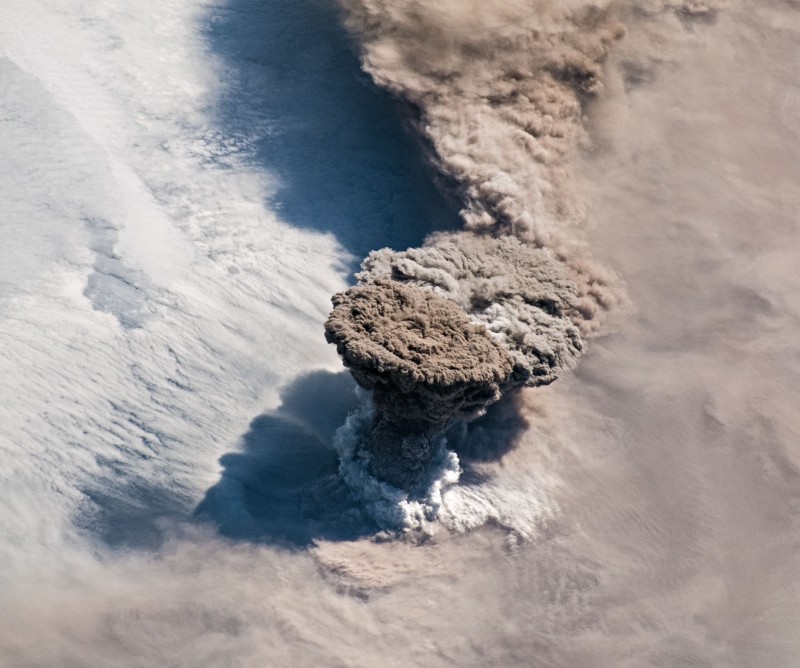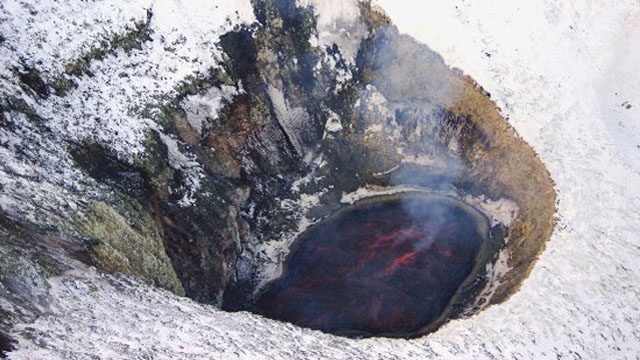Eruption at Sarychev Peak threatening air traffic

Sarychev Peak in Russia erupting on June 14, 2009. Image courtesy of the NASA Earth Observatory.
The transpacific air routes over the Aleutians, the Kamchatka Peninsula and the Kuril Islands are a prime location for the threat of ash to commercial aviation. Many of these volcanoes, especially on the western side of the Pacific Ocean are not closely monitoring and sometimes only remote sensing techniques can keep track of the activity.
Case in point is the current eruption at Sarychev Peak in the Kuril Islands. The volcano is on one of the southern-most Kuril Islands (Ostrov Matua) in Russia, just north of the (contested) border with Japan. The eruption was first detected on June 12th by the U.S. Air Force Weather Agency and then captured by the MODIS on a NASA Aqua satellite. The impressive tan plume is seen over the cloud cover spreading over 250 km / 150 miles away from the volcano. By June 13th, the ash had spread to over 700 km / 450 miles from the volcano, again captured by NASA (including some thermal information indicating the hot spot for the volcano). The ash plume is over 8 km / 5 miles tall – and it is this thick ash plume that is threatening air travel across the Kuril Islands.
This is the first time I had heard of Sarychev Peak even though it is one of the most active volcanoes in the Kuril Islands. An andesitic volcano currently sits within an older 3.5 km / 2 mile caldera. The volcano produced both passive and explosive eruptions, either in the form of andesite lava flows (possibly as recently as 1986) or pyroclastic flows, some of which necessitated evacuations of the (sparse) population. An eruption in 1946 was possibly as powerful as a VEI 4 where pyroclastic flows made it to the ocean.



